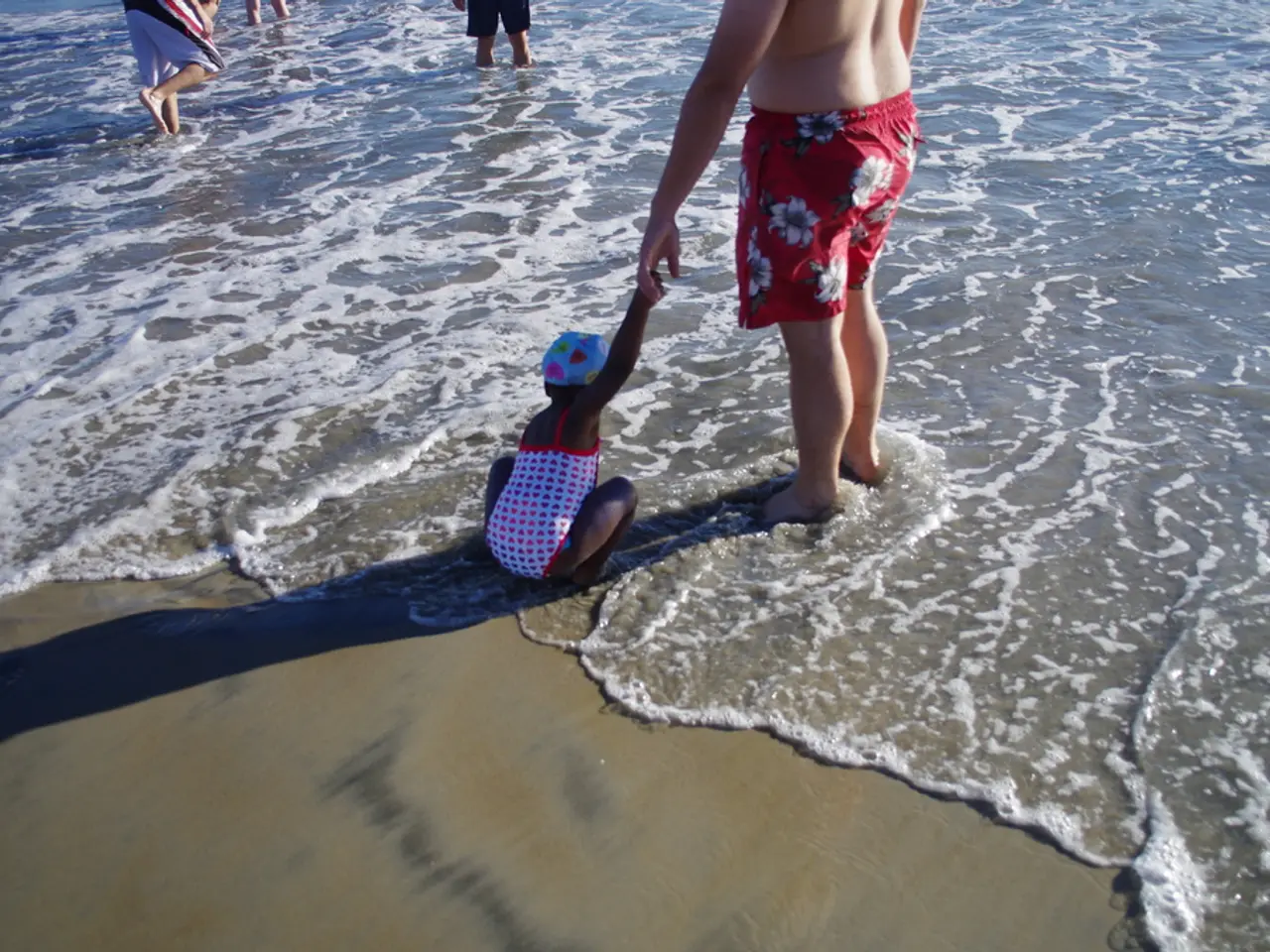Essential Water Safety Guidelines for Everyone's Awareness
Staying Safe in Water Sports: Essential Tips for a Fun and Secure Experience
Water sports can be a thrilling and enjoyable way to spend time, but it's crucial to prioritise safety to minimise the risk of injury and accidents. Here are some essential tips for staying safe in various water environments.
Safety in Lakes
Adhering to safety protocols is vital when engaging in water sports on lakes. Always wear a U.S. Coast Guard-approved life jacket, as lakes often have hidden currents, drop-offs, and poor visibility. Life jackets not only improve safety but also enhance visibility for rescuers. Swimming skills are essential, and children especially benefit from early swim lessons to build confidence and water survival skills.
Safety in Oceans and Rivers
Before entering any natural body of water, it's important to check the water conditions. Look for signs of strong currents, hazardous weather, or dangerous wildlife, and always obey posted warnings. Swimming areas with lifeguards are safer choices. Teach children basic water safety rules like no running near water, no diving in shallow water, and always swim with a buddy. Keep a phone nearby for emergencies and familiarise yourself with your surroundings to know hazards and rescue equipment availability.
Freshwater Safety
In freshwater such as lakes and rivers, avoid swallowing water and keep your mouth closed while swimming to reduce illness risk from organisms. Avoid water activities in warm freshwater during high temperatures and low water levels, which foster bacteria growth. Nose clips or holding your nose shut can help prevent infections. Also, be aware of dangers specific to pools, like drain entanglement hazards, and ensure barriers such as fences or alarms are in place at home pools.
General Safety Tips
- Stay hydrated and use sun protection to protect yourself from the elements.
- Avoid alcohol consumption when supervising children or swimming, as it impairs judgement and reaction times.
- Learn CPR for emergency response, as it equips individuals with the skills necessary to respond effectively during drowning emergencies.
Child Safety
Teaching children about water safety is essential. Enrol them in swimming lessons, emphasise the importance of constant supervision, and ensure they wear life jackets whenever near water. Never let children swim alone, as this significantly reduces the risk of drowning.
Preventing Waterborne Illnesses
Preventing waterborne illnesses involves avoiding contaminated water, practising good hygiene, and recognising symptoms early to seek prompt medical attention. Symptoms such as diarrhoea, vomiting, and fever should not be disregarded.
Empowering Others
Fostering a culture of water safety is essential for enjoying the benefits of water activities while minimising risks. Educating others about water hazards can significantly reduce the chances of accidents.
Navigating Water Currents
Navigating water currents safely involves identifying rip currents and swimming techniques in currents. If caught in a rip current, remain calm and swim parallel to the shore to escape.
Specific Water Sport Risks
Understanding risks specific to each water sport is crucial for ensuring a safe and enjoyable experience. Utilising proper equipment for water sports is fundamental for both safety and performance. Evaluating water risk levels involves understanding weather conditions and water depth, as well as knowing one's own swimming abilities.
Preparing for Emergencies
Preparing for water emergencies involves acquiring CPR skills, maintaining a comprehensive first aid kit, establishing a rescue plan, equipping with safety gear, and conducting regular safety drills.
By following these tips, you can ensure a fun, safe, and secure water sports experience for everyone involved.
- In addition to adhering to safety protocols when engaging in water sports, it's essential to stay hydrated and use sun protection to protect yourself from the elements.
- Learning CPR for emergency response equips individuals with the skills necessary to respond effectively during drowning emergencies.
- Enrolling children in swimming lessons and teaching them basic water safety rules like no running near water and always swimming with a buddy can help ensure their safety.
- Nose clips or holding your nose shut can help prevent infections in freshwater environments.
- Utilizing proper equipment for water sports is fundamental for both safety and performance.
- Familiarizing yourself with your surroundings to know hazards and rescue equipment availability is crucial when swimming in natural bodies of water like oceans and rivers.
- Teaching children the importance of constant supervision and ensuring they wear life jackets whenever near water can significantly reduce the risk of drowning.
- Understanding risks specific to each water sport and evaluating water risk levels involves understanding weather conditions, water depth, and knowing one's own swimming abilities.




